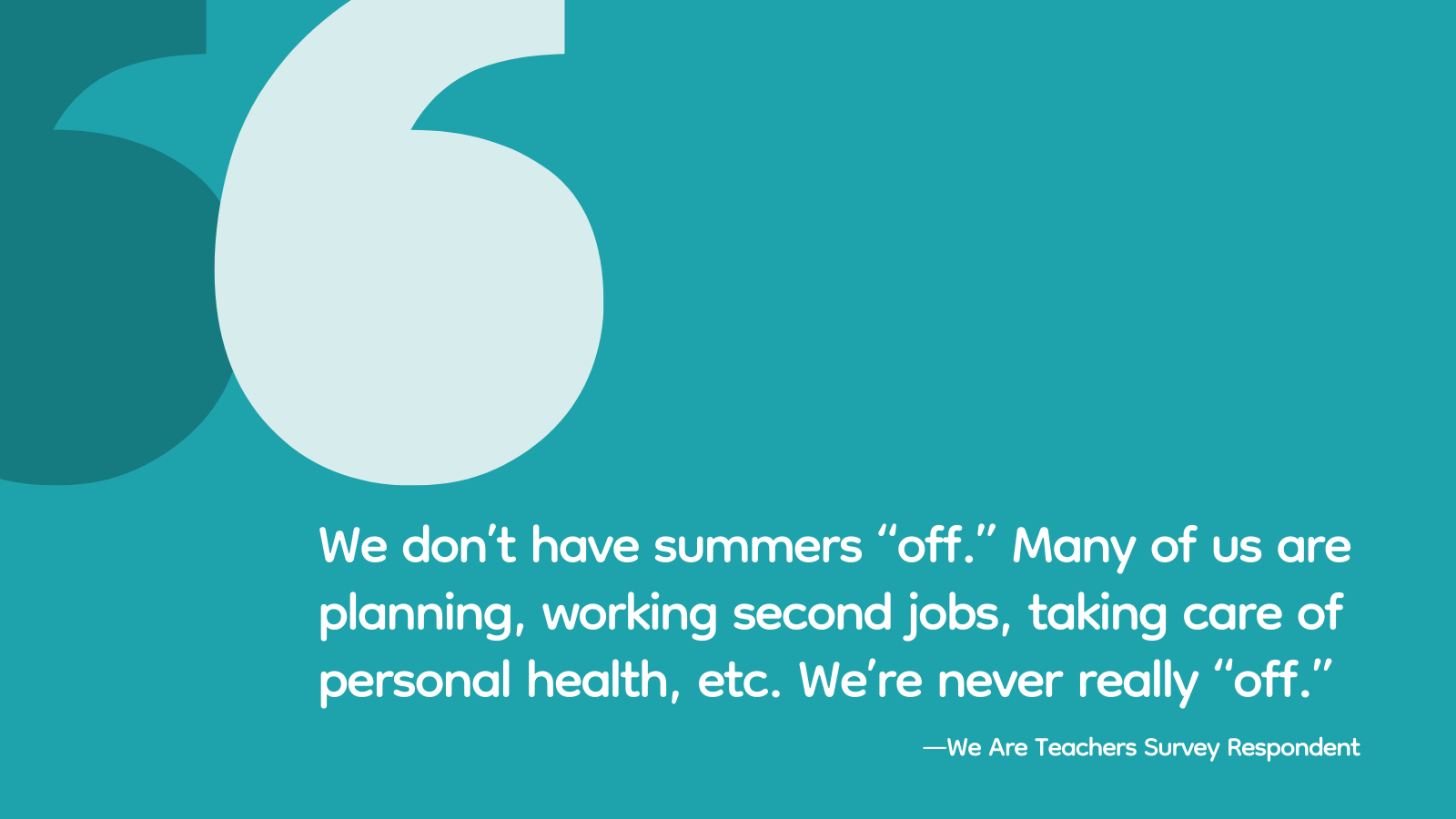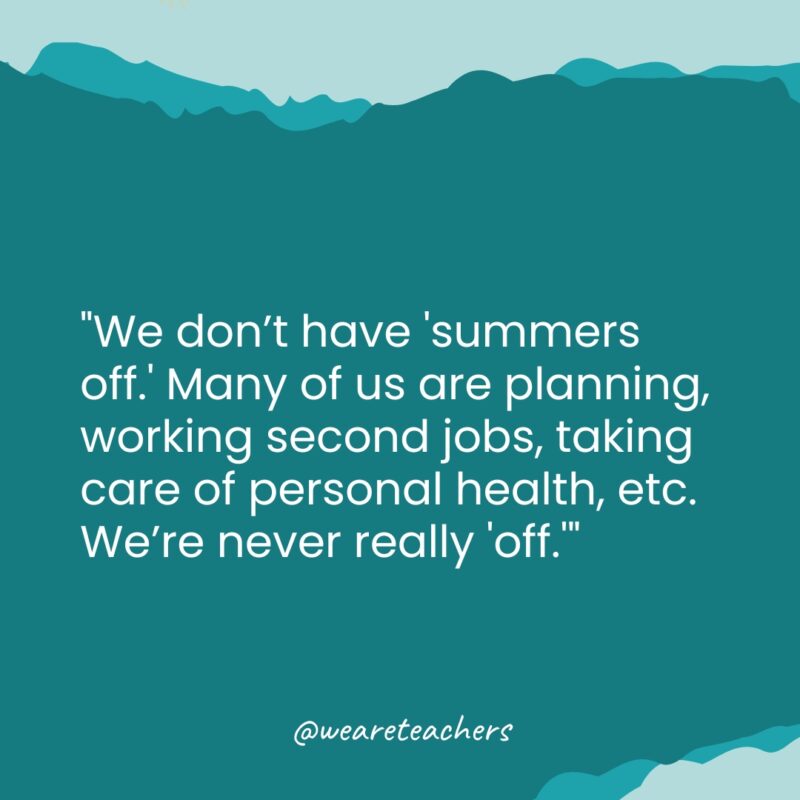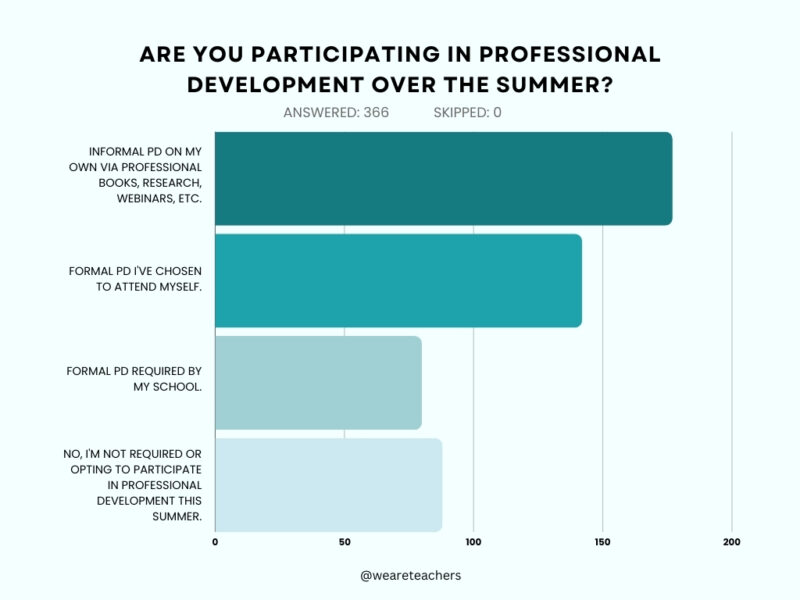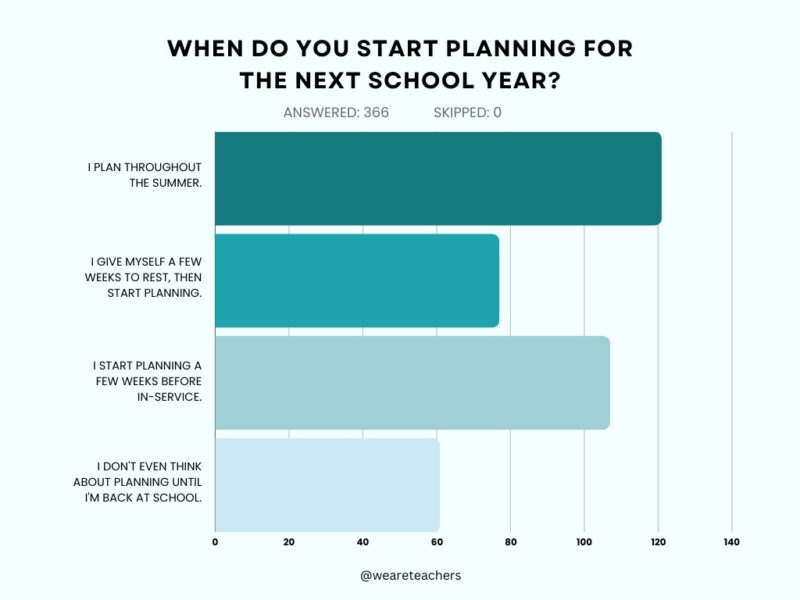
Summer is just around the corner. To those outside the education world, three months “off” might look like nothing more than a paid vacation. But teachers know that summer not only offers a crucial opportunity to unwind and recharge, it’s often when one form of work ends and another (or several) begins.
We recently conducted a survey with 366 teachers to find out how pre-K through 12th grade educators in the United States are spending the summer of 2024. Whether you’re a fellow educator looking for inspiration or just curious about what teachers do when the school doors close, we’ve got the inside scoop. Spoiler alert: The answer is not eating bon-bons.
First of all, summer isn’t as long as you think it is.
Contrary to the common belief that teachers enjoy a luxurious “three months off” during the summer, the reality is quite different. In fact, 62% of teachers report that their summer break—the stretch between the last contract day of one school year and the first day of in-service for the next—is just about nine weeks, a little over two months, or even less.
Here’s what one survey respondent said about their summer:
“Our summers seem to be getting shorter and shorter. We are required to do 4-5 days of professional development not including the back-to-school trainings. Teachers are typically not given time during back-to-school training/staff development to set up our classrooms. We have to do it on our own time.”
This shorter break means that the time teachers have to relax, recharge, and attend to personal matters is quite limited. So, while the idea of a long, leisurely summer may sound appealing, most teachers are actually working with a much tighter schedule to balance rest, professional development, and often a second job. It’s a reminder that the teaching profession demands a lot, even when the school doors are closed.
Almost half of teachers will be working a second job.
For many teachers, the idea of a summer “vacation” is more myth than reality. In fact, 49% of teachers we heard from will be working a second job during the summer. And get this: 90% of those second jobs are still in the education field. Whether they’re teaching summer school (37%), tutoring (25%), or developing curriculum (28%), teachers are staying busy and engaged in their profession even when school’s out. It’s a testament to their dedication but also a reminder of the financial pressures they face.

Most teachers will be participating in professional development.
The surprising reality for many teachers is that summer isn’t just a break from the classroom—it’s also a time for professional development. Seventy-six percent of teachers surveyed said they are actually hitting the books themselves, attending workshops, seminars, and courses to sharpen their skills. This commitment to continuous improvement helps teachers stay current with educational trends, integrate innovative teaching methods, and meet the evolving needs of their students … but it’s also often unpaid labor.

Another thing they’re doing during the summer? Planning for the upcoming school year.
While students might envision their teachers luxuriating by a pool for the summer, 86% of teachers told us they spend a significant chunk of their summer planning for the new school year. During the school year, the daily grind leaves little room for this in-depth preparation, so summer becomes the essential time to brainstorm new ideas, integrate fresh educational tools, and map out a curriculum that improves on the year before.

Most teachers who have children will be providing primary childcare.
For many teachers with children, summer break means shifting gears from managing a classroom to managing their own kids full-time. While students might think their teachers are off on exotic vacations, the reality is that many —84% of teachers who have children—will be immersed in primary childcare duties. Balancing playdates, meal prep, and endless rounds of “Mom, watch this!” can be just as demanding as a day in the classroom as they go from one full-time job to another. So, while summer might offer a break from grading papers, it’s hardly a break at all as teachers juggle another rewarding yet demanding role: parenting.
Most teachers’ paychecks extend through the summer months, but some do not.
Contrary to popular belief, teachers do not get “paid vacation” for their summers. Most teachers (78%) take a smaller paycheck so their money is spread out evenly in paychecks throughout the summer. But a whopping 22% of teachers don’t get that option and have to budget carefully as a result. One survey respondent told us, “I’m dreading getting down to minimal money in my account the last week or so before we get our first paycheck.”
And when they’re not working, planning, doing PD, or providing childcare, they’re catching up on appointments, maintenance, and projects they didn’t have time for during the school year.
Teachers often find themselves scrambling to catch up on doctor appointments, projects, and home and auto maintenance during the summer, simply because the school year is a whirlwind of never-ending tasks and commitments (not to mention a rigid schedule where you can’t get an oil change during your lunch break). Between lesson planning, grading, parent-teacher conferences, and extracurricular activities, there’s barely a moment to breathe, let alone schedule a dentist appointment. Something’s got to give, and that “something” is usually the time needed for personal upkeep.

Our survey clearly shows that the image of teachers basking in a three-month summer break is largely a misconception. The reality is that many teachers’ summer vacations are filled with obligations both personal and professional. Whether it’s taking on a second job, attending professional development, catching up on personal appointments or tasks, or providing childcare, the majority of teachers have just a limited amount of time to unwind during summer.
We know teaching requires tremendous dedication during contract hours. Our survey shows it demands teachers’ time off the clock as well.






